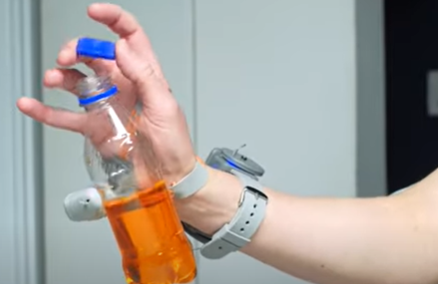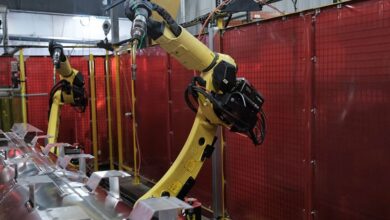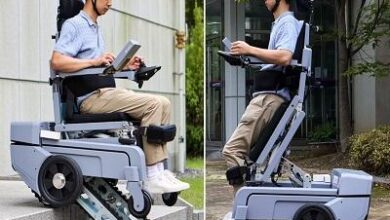Scientists Develop ‘Third Thumb’ Powered by AI and Robotics : Tech : Tech Times

Robotics and AI have led Cambridge researchers to develop the “Third Thumb,” ushering in the next phase of motor augmentation.
Professor Tamar Makin of the Medical Research Council’s (MRC) Cognition and Brain Sciences Unit and Dani Clode created the “Third Thumb,” a robotic accessory that improves range of motion. According to Interesting Engineering, this wearable tech improves gripping and hand-carrying.
Third Thumb: The Next Evolution Stage
Devices like the Third Thumb make difficult jobs possible. It also allows a disabled person to do complicated chores with one hand without assistance. Professor Makin stressed that such technology is reinventing humanity, and inclusion is key to its progress.
Pressure sensors beneath each big toe operate the third thumb, worn opposite the biological thumb. Right toe pressure pushes the thumb across the hand, whereas left toe pressure moves it toward the fingers.
The apparatus was tested at the Royal Society Summer Science Exhibition in 2022 with 596 three- to 96-year-olds. Before manipulating objects, participants had a minute to learn the thumb. Within a minute, 98% could use the Third Thumb.
Participants picked up pegs from a board, placed them in a basket, and handled foam items of varied sizes and shapes. The study showed that nearly everyone could use the gadget instantly, proving its ease and accessibility.
Researchers observed that older individuals, kids, and teens struggled with the “Third Thumb,” whereas both genders fared comparably.
Meanwhile, contrary to predictions, musicians and those with dexterity-based vocations did not use the Third Thumb better than others.
These findings will help researchers improve the Third Thumb to make it more accessible and user-friendly for a broader range of people, improving its potential advantages across age groups and skill levels.
Read Also: Game-Changer: India Launches World’s First 3D-Printed Rocket Engine
Dani Clode stressed the need for inclusive and accessible wearable gear. Co-author Lucy Dowdall underlined that wearable technologies should easily interact with users’ motor and cognitive capacities, taking demographics and personal characteristics into account, as reported by UPI.
To have a better understanding of how the Third Thumb works, Cambridge researchers demonstrated it in this video:
How Did Humans Developed Fingers?
Scientists discovered that two genes, hoxa11 and hoxa13, form fish and human fin rays. According to a University of Chicago study, these genes, essential for fish fin ray production, also develop human fingers. This discovery illuminates a major evolutionary change.
Based on discovered fossils, early humans had polydactyl hands with more than five digits. Hence, scientists are puzzled as to why modern people have five fingers.
Researchers at Montreal University used fish-type hoxa11 gene regulation to create mice with seven fingers on each paw, per the Daily Mail. Their investigations showed that mutations changing gene activity caused the digit decrease, not gene addition.
The scientists found that fish activate the hoxa11 and hoxa13 genes in overlapping fin areas, but mice and humans activate them in distinct domains. This difference shows the fin-to-hand evolution.
The study suggests a new perspective on evolution. It proposes that regulatory sequence mutations, rather than gene mutations, may be the driving force behind morphological changes. This finding underscores the importance of animal models in understanding prenatal abnormalities and opens up new avenues for fundamental research.
Moreover, the research expands on Charles Darwin’s discovery that species have a skeletal structure despite their limbs’ diverse functions. Darwin found limb-bone similarities in humans, moles, horses, porpoises, and bats.
Building on Charles Darwin’s observations, modern scientists have made significant strides. With the aid of advanced technology, they have identified genetic ties that likely influenced the development of innovative solutions like the Third Thumb, a promising wearable tech. This progress in our understanding of evolution is a testament to the power of scientific advancement.
Related Article: New Study Links Nanoplastics to Potential Heart Problems in Growing Organisms
ⓒ 2024 TECHTIMES.com All rights reserved. Do not reproduce without permission.



